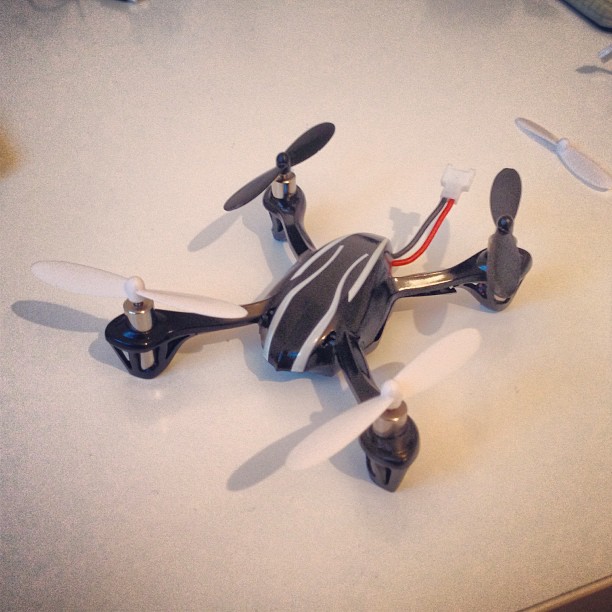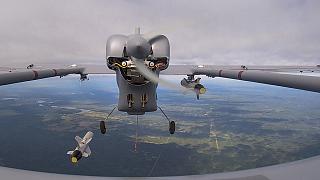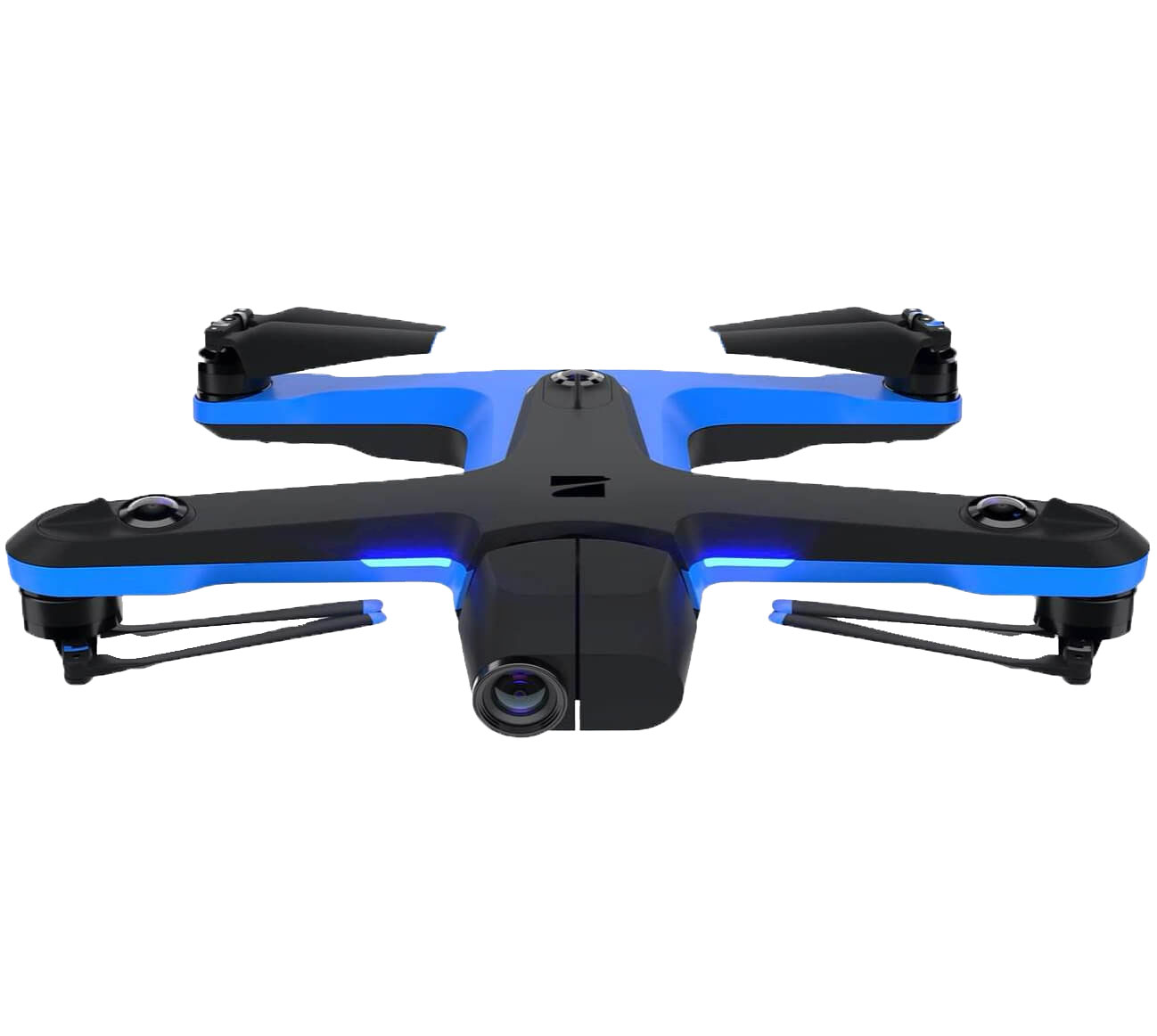
The Stinger 2.0 is a 2.4GHz ready-to-fly FPV drone. It includes everything needed for FPV flight including a smartphone holder, and a USB charging cable. The drone comes with propeller protectors to give extra blade protection, AA cells for the transmitter and a built in FPV cam. While you might want to buy a better-end model, the Stinger2.0 is a great starter kit.
HS110G
Holy Stone's HS110G rtfFPV drone might be the right choice for you. The drone has many features, including a 1080P HD 110deg Field Of View camera and First Person View transmission. This allows you to see what you are doing. It can hover stably so that you can take clear pictures and return to the start when the signal is lost. It can hover when the battery runs out and return home.
SwagDrone 210 - Up
SwagDrone's 210-UP FPV drone excels in FPV racing. It features a carbon fibre body, four-up FFPV goggles and an optimized nightvision camera. It is easy-to-assemble and features three flight modes. It also includes failsafe, locator and other functions. In addition, the drone can connect to smart devices via 4-UP.

Blade Inductrix
The Inductrix FPV is the clear winner when it comes to micro FPV drones. It has an 8mm motor and comes ready to fly. Inductrix's FPV+ micro drones are lightweight and compact. Designed to meet the needs of aspiring FPV pilots, the Inductrix FPV comes with all the necessary features to get you flying right out of the box.
Walkera F210 FPV
The Walkera FPV RC drone has an impressive 210mm from motor shaft to motor shaft. The drone also has five-inch props. Walkera F210 utilizes an SP Racing F3 control unit with enhanced PWM generation functions. Oneshot mode is also available to improve the speed of ESC motors. Although the brand doesn’t specify the exact type, we are confident that this quadcopter comes with BLHELI ESCs. There are three flight modes available for this quadcopter: advanced, intermediate, or beginner. The first one is meant for beginners. The other two are intended for experienced flyers.
DJI FPV
The DJI FPV has a better-definition digital technology than previous models. It has the same range and resolution as the 5.8 GHz analog systems. It is also acceptable for latency. The large goggles are also impressive, and the interface is surprisingly user-friendly. The DJI-standard DJI performance is evident on this drone. Here's a closer look at the main differences between the two systems.

FAQ
What is the difference in a quadcopter from a hexacopter.
A quadcopter, a four-rotor helicopter, flies just like a helicopter. It has four rotors that rotate independently. A hexacopter is similar to a quadcopter except that it has six rotors instead of four. Hexacopters are more stable and maneuverable than quadcopters.
Does the FAA regulate drones
The FAA oversees all aspects drone operations including safety standards and certification requirements.
With a drone, can someone spy on me?
Anyone can spy on you with a drone. Protecting yourself from drones requires that you be alert to them and stay away from areas where they fly. Notify 911 immediately if you find a drone in your vicinity.
What laws apply to drones flying above private property?
The FAA has recently issued new rules for commercial drone flights. These rules do not apply to UAVs under 55 pounds or flying at less than 400 feet above sea level. Commercial operators must register with FAA to receive a license. Local authorities must also approve them if they are operating near airports or in other restricted areas.
Statistics
- According to ZipRecruiter, the minimum hourly wage of drone pilots is $20. (thedroneu.com)
- Research and Markets predict a growth rate of 51.1% over the next five years. (thedroneu.com)
- According to Indeed, a drone pilot gets paid $25.73 per hour on average in the US. (dronesgator.com)
External Links
How To
How to Fly Drones With Beginners
A drone can be used to fly remotely controlled aircraft for photography, surveillance, scientific research, hobby and commercial purposes. Drones are a technology that has been around since World War II. DJI's Phantom series quadcopters were first commercially available in 2010. From beginner-friendly drones such as Parrot AR Drone 2.0 through professional-grade multirotor craft like DJI Mavic Pro, many types have been available.
There are several ways to fly a drone, including;
-
Remote control - This allows you to control the drone from your hand. There are two main types, On/Off switches (like radios) and joysticks.
-
Manual Control - This method uses a smartphone app to remotely control the drone using GPS coordinates. You must keep track of the location where you want the drone to go and follow the instructions from the app.
-
Autonomous Flight - This method involves leaving the piloting duties to the drone itself. The drone is able to fly autonomously, without the need for human intervention. To enable autonomous flight, the drone should have a built in camera and sensors capable recording images and data.
-
Triggered flight - This is similar to manual control except that the pilot sets up a preprogrammed route and the drone follows the route until it reaches its destination. The drone automatically lands once the route has been completed and returns to the base.
-
Landing Gear- Some drones include landing gear that allows for safe landing if the power goes out or they run out of batteries.
-
Goggles: Some pilots use goggles in order to protect themselves against debris when operating.
-
Camera - Some drones are equipped with cameras allowing you to capture photos and videos from above.
-
Obstacles: Some drones are equipped with obstacle avoidance systems to prevent them from hitting obstacles.
-
Speed - Some drones reach speeds exceeding 40 mph.
-
Battery Life: Most drones have a battery life of between 20 and 30 minutes depending on how many power sources you use.
-
Some drones are capable of traveling up to 30 miles depending upon their make and model.
-
Power source - Not all drones can use an external power source. Others can run on internal batteries.
-
Weight - Some drones have a weight of less than 1 pound and others weigh 4 lbs.
-
Size - The size of drones varies from small, easily carried devices to more substantial crafts that weigh in excess of 50 pounds.
-
Price - From high-end models that cost thousands of dollars to low-cost options that start at $100, all drones fall under a certain price category.